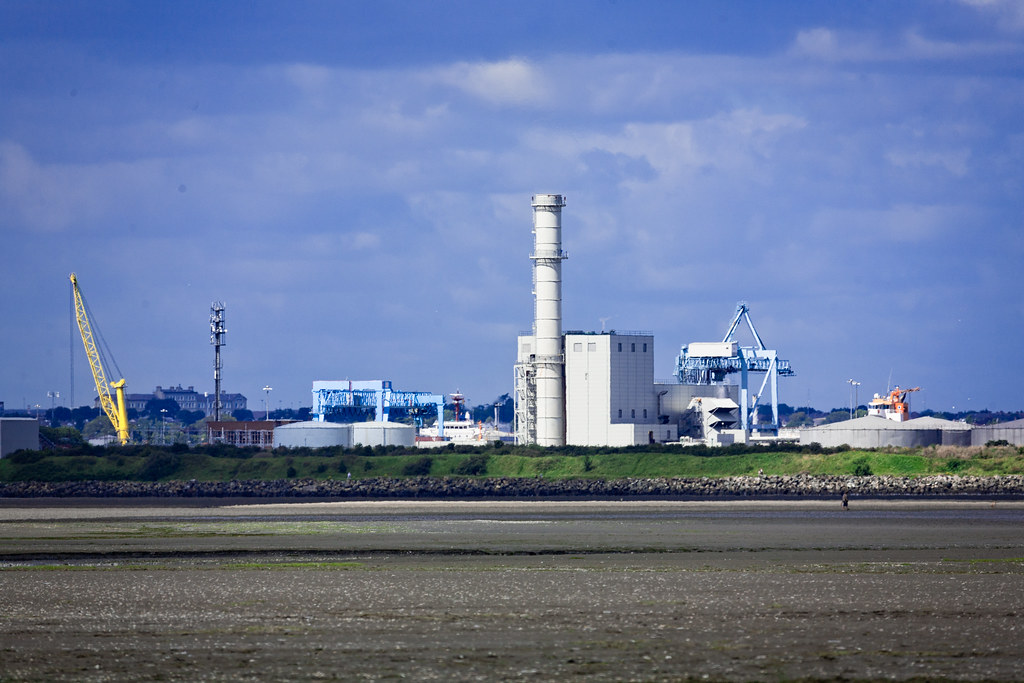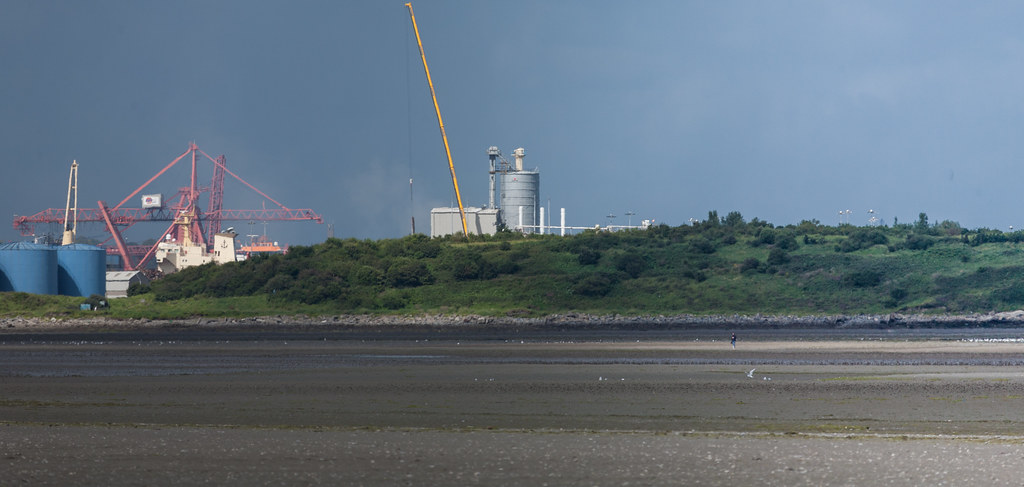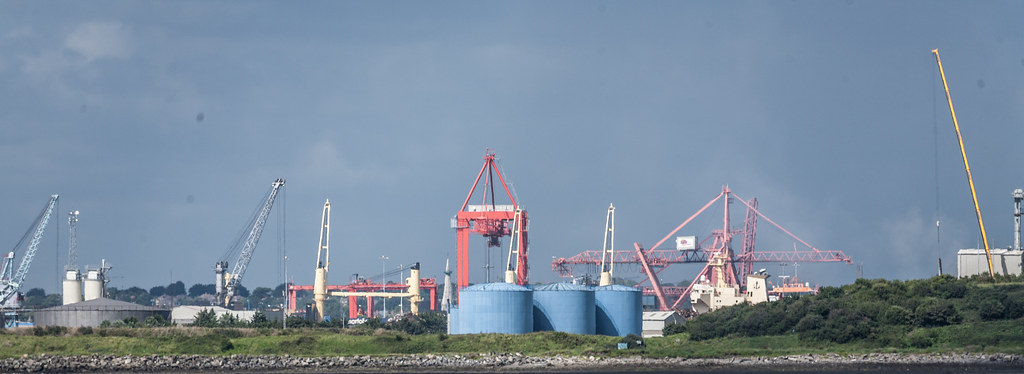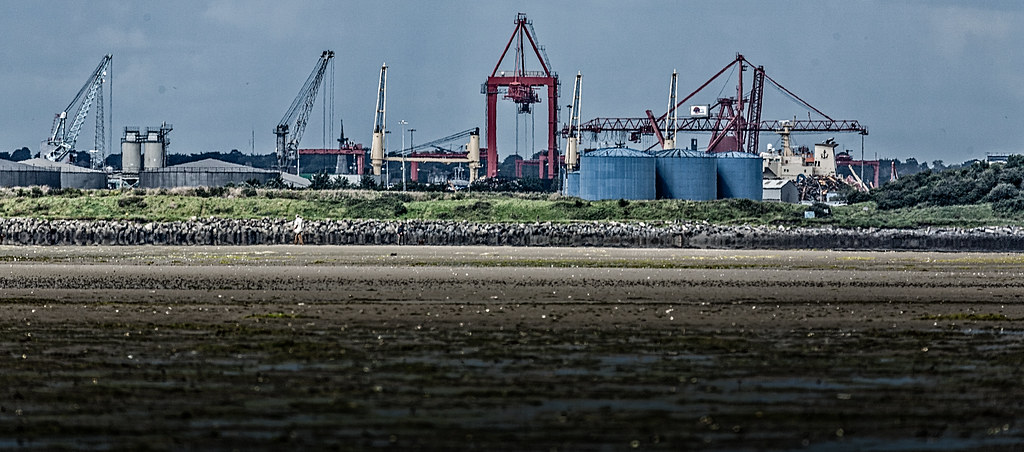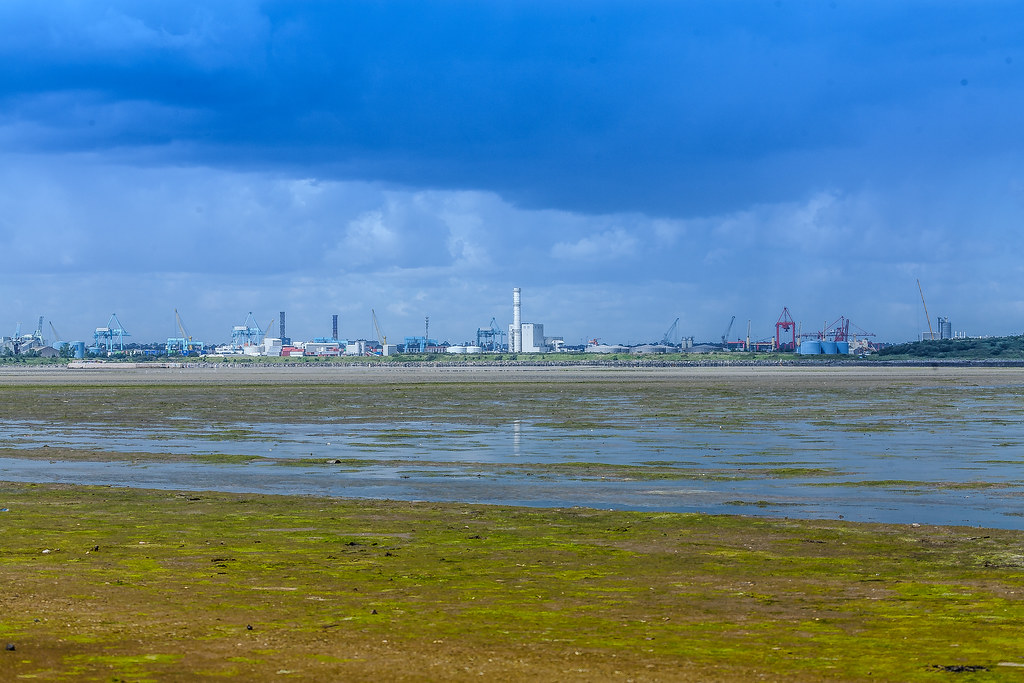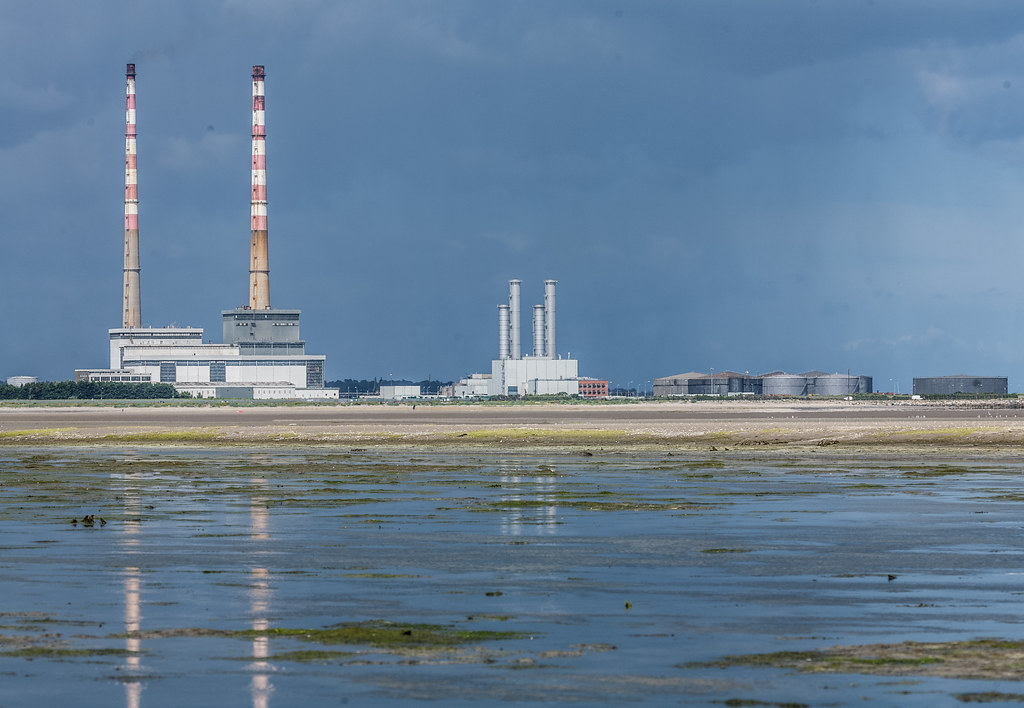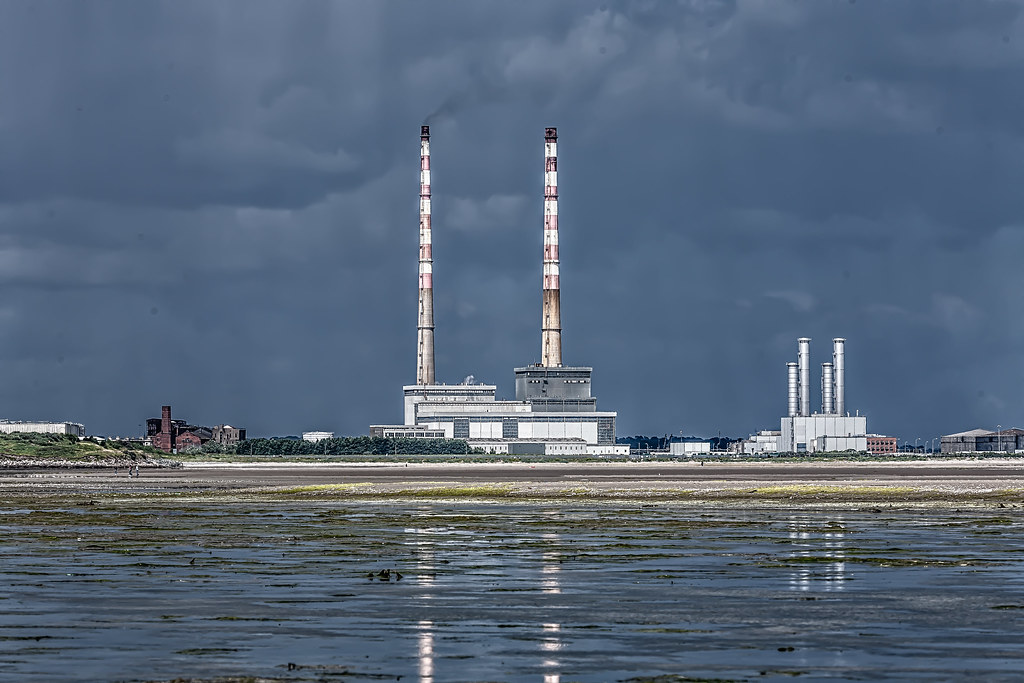DUBLIN PORT AND PIGEON HOUSE
The thermal station chimneys are among the tallest structures in Ireland and are visible from most of Dublin city. Number 1 chimney is 207.48m (680 ft 9in) high. Number 2 chimney is 207.8m (681 ft 9in) high. The chimneys are featured prominently in the video for the song "Pride (In The Name Of Love)" by U2. Dublin City Councillor and historian Dermot Lacey began a process to list the chimneys for preservation to safeguard their future after the Station was to close in 2010. This was later refused by the Council Planning Department. They were subsequently listed as protected structures in July 2014.
One could easily think that the Pigeon House, which is situated near the two tall ESB chimneys and the Great South Wall in Ringsend, got its name from pigeons. However, it is named after a gentleman called John Pidgeon (later the ‘d’ in his name was dropped which explains the possible confusion).
Around 1760 John Pidgeon was the caretaker of a storehouse used by the builders of the Great South Wall. At that time sailing ships brought letters and packets as well as passengers from England and Europe to Ireland. These were called packet ships and they landed and departed from the new wall near Mr Pidgeon’s storehouse.
Imagine, at that time it could take a whole week to get to and from Wales; even longer in bad weather. So John Pidgeon had a bright idea. He started selling refreshments, tea, sandwiches, cakes and lemonade at his storehouse to hungry and thirsty passengers. ‘Pidgeon’s House’ became so popular that even Dublin people used to come out to Ringsend at the weekends for a day out. Mr Pigeon would bring them on boat trips out to his house and back to Ringsend again.
In 1793 long after John Pidgeon died a new bigger building was built which was used as a hotel for the passengers for a number of years. This building is still there today and is used by the Electricity Supply Board.
A few years later when the government was afraid that the French might invade Ireland they built a fort near the hotel to guard the entrance to Dublin Port. It became known as the Pidgeon House Fort.
These photographs were taken ten years ago using an original Canon 5D coupled with a 100mm-400mm lens handheld without any stabilisation. Until now I was not able to do much with the photographs because of underexposure, blur and excessive noise. Also using the lens revealed that there was a massive amount of dust on the sensor … I must admit that i was surprised. To process these photographs I used Adobe Lightroom, DXO and ON1 RAW.
One could easily think that the Pigeon House, which is situated near the two tall ESB chimneys and the Great South Wall in Ringsend, got its name from pigeons. However, it is named after a gentleman called John Pidgeon (later the ‘d’ in his name was dropped which explains the possible confusion).
Around 1760 John Pidgeon was the caretaker of a storehouse used by the builders of the Great South Wall. At that time sailing ships brought letters and packets as well as passengers from England and Europe to Ireland. These were called packet ships and they landed and departed from the new wall near Mr Pidgeon’s storehouse.
Imagine, at that time it could take a whole week to get to and from Wales; even longer in bad weather. So John Pidgeon had a bright idea. He started selling refreshments, tea, sandwiches, cakes and lemonade at his storehouse to hungry and thirsty passengers. ‘Pidgeon’s House’ became so popular that even Dublin people used to come out to Ringsend at the weekends for a day out. Mr Pigeon would bring them on boat trips out to his house and back to Ringsend again.
In 1793 long after John Pidgeon died a new bigger building was built which was used as a hotel for the passengers for a number of years. This building is still there today and is used by the Electricity Supply Board.
A few years later when the government was afraid that the French might invade Ireland they built a fort near the hotel to guard the entrance to Dublin Port. It became known as the Pidgeon House Fort.
These photographs were taken ten years ago using an original Canon 5D coupled with a 100mm-400mm lens handheld without any stabilisation. Until now I was not able to do much with the photographs because of underexposure, blur and excessive noise. Also using the lens revealed that there was a massive amount of dust on the sensor … I must admit that i was surprised. To process these photographs I used Adobe Lightroom, DXO and ON1 RAW.
SORRY FOR THE DELAY
You will find links to buy products from Amazon, Google and other partners. If you click on these links, you’ll find that the URL includes a small extra piece of text which identifies that the click came from my websites. This text is an affiliate code, and it means that I get a small percentage of the money you spend if you choose to buy that product, or, in some cases, other products from the site soon after. These affiliate links help pay the costs of producing my websites and ensure that the content is free to you.
COPYRIGHT INFORMATION BELOW APPLIES ONLY TO PHOTOGRAPHS

This work by William Murphy aka Infomatique is licensed under a Creative Commons Attribution-NonCommercial-ShareAlike 4.0 International License.
Permissions beyond the scope of this license may be available at https://excellentstreetimages.com/in-the-year-twentytwenty/copyright/.

